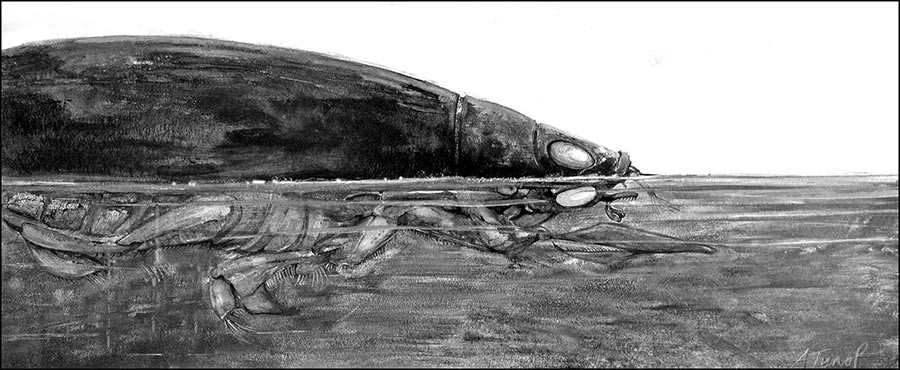
“What’s this shiny black beetle with four eyes?” asked Erin Hayes-Pontius, a visiting UVM student, from her microscope. Without glancing up from my own scope I answered, “that’s a whirligig beetle.” Erin’s answer came back: “err, cute...but what’s it really called?”
I will grant you that the name whirligig is a bit odd – particularly when applied to an inert pickled beetle – but there are excellent reasons for it. In life, whirligig beetles weave and whirl on pond and river surfaces amongst dozens of their peers. They move like miniature motor boats that appear to lack rudder function. There’s method to this seeming madness. The mesmerizing movement confuses predators, who find it difficult to focus on any one individual. Ecologists call this phenomenon predator dilution. It’s like the old joke about the two friends and the tiger: “I don’t need to outrun the tiger, I just need to outrun you!”
Whirligig beetles have other tricks that reduce their likelihood of becoming fish or bird food. In common with many aquatic insects, they use countershading to blend with their environment; they are black against a dark background when viewed from above, and their underbelly is pale against the sky when viewed from below.
The four eyes that Erin noticed are a unique feature of the whirligig beetle family, Gyrinidae. All it takes is a quick look with a magnifying glass to notice that these beetles have two fully formed compound eyes looking up at the sky, and a second fully formed pair looking down below the water line. There’s a dark band of exoskeleton along the side of the head that separates upper from lower eyes. This must be an incredible defensive asset against aquatic and aerial predators, and as a collector of insect samples, I can certainly confirm that when I swing my net from above, whirligigs dive. How their sensory systems make sense of the dual images pushes the limits of my imagination; perhaps it’s akin to seeing and hearing at the same time.
Yet another defense mechanism involves the production of a distasteful compound that reduces a predator’s interest in dining on whirligig tartar. According to a paper by Bernd Heinrich, Professor Emeritus at the University of Vermont, and Daniel Vogt, Professor of Biological Sciences at SUNY Plattsburgh, naive fish may take their chances on a whirligig beetle, but even a single exposure is enough to cause aversion. The beetles are therefore quite safe from fish despite occurring in large numbers and completely out in the open on many water bodies. In fact, the large numbers may well serve to advertise to fish that these beetles do not belong on the menu.
You may wonder why whirligigs spend their time on the surface, when the majority of invertebrates in aquatic systems live on the bottom. What they’re doing is exploiting a niche by preying on insects that find themselves stuck in the surface film. Whirligigs use a combination of visual cues and water surface vibrations to locate prey. They then circle their victims before using front legs that are typically tucked into streamlined grooves to grab them.
Whirligigs eat a number of soft-bodied prey species found on the water surface. Their diet includes flies and springtails, but they also eat mosquito larvae that come to the surface from below to breath. I can’t help but wonder how many mosquito bites I may have avoided because some hungry beetles intercepted the buzzing pests before they ever took flight.
Next time you see a flotilla of rapidly-moving, chrome-domed beetles at your favorite fishing or swimming spot, perhaps thank them for their pest-control services. And remember, that although they may appear to be ignoring you, they likely are keeping an eye – perhaps four of them – on you.

